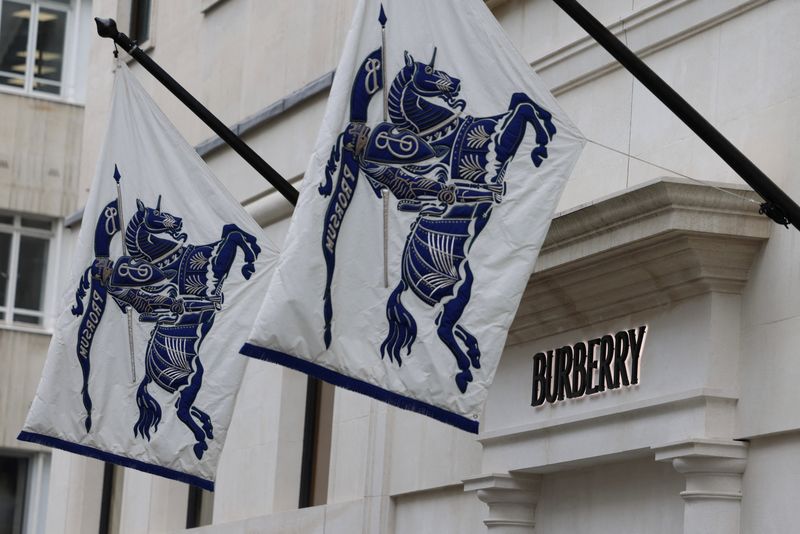By Helen Reid
LONDON (Reuters) - Burberry (LON:BRBY) is hoping "scarf bars" in its stores, new ranges of puffer jackets, and a sharper focus on its classic products rather than new fashions will help to turn its brand around.
The British luxury retailer is shifting away from leather goods, which had been a focus for the two years since Daniel Lee joined as creative director, and back to outerwear, including the trench coats it is best known for.
Burberry's turnaround plan sent its shares up as much as 20% on Thursday as investors welcomed new CEO Joshua Schulman's return to core strengths and acknowledgement that price rises had gone too far.
"There is a pent-up demand for the Burberry that people know and love, and we're seeing this sentiment shift happen globally now with some of the new campaign imagery and the messaging," Schulman told investors and analysts.
Burberry plans to change its store layout to emphasise scarves and trench coats over bags and shoes, with "scarf bars" to drive sales of its cashmere scarves priced from $450 to $1,050.
Schulman said he wants a "candy store" approach to scarves, which he said are currently mostly hidden in drawers.
Quilted coats, down and puffer jackets, and wool and cashmere coats are also areas where Burberry could gain legitimacy, Schulman said.
"They can actually do a lot more in outerwear than they have done, just by branching out into other parts of outerwear rather than just trenches," said Anna Farmbrough, portfolio manager at Ninety One, which holds Burberry shares.
"It's more about having specialism in a product set. That's more important than having specialism in a lot of product sets which can actually be margin-dilutive because you're trying to be good at everything at once," she added.
Farmbrough said scarf bars could be a way for Burberry to improve its store productivity, measured by sales per square metre, a metric on which it has lagged luxury rivals.
Schulman said Burberry has pricing power in outerwear, pointing to leather trench coats at around $9,000 that were best sellers in its recently renovated East 57th Street store in New York, which also has a scarf bar.
Developing more puffer jackets would mean more direct competition with peers like Italy's Moncler, which was reported to be considering a bid for Burberry, though sources close to the matter denied the reports and Schulman said he would not comment on speculation.
But outerwear and scarves currently contribute around 40-50% of Burberry's revenues, and would not alone move the needle for a brand turnaround, Morningstar analyst Jelena Sokolova said.
"We've long highlighted that Burberry's disadvantage is a relatively small contribution from products where its brand is the strongest, but we view the renewed focus on them as positive," she said.
DESIGN RISK
Burberry's shift in focus comes with a rethink of how the design team works, with Schulman saying Lee's creative team will be more closely integrated with marketing and merchandising.
"The design function was relatively independent and much more siloed than it is in better-performing luxury businesses, so an immediate priority for me was to bring the teams together," said Schulman.
That addresses a key fear of investors in all luxury brands, that there can be too much risk associated with the specific style and personality of the creative director.

Burberry plans to move away from seasonal, runway fashion products it described as having a "niche aesthetic" serving a narrow base of luxury customers.
"Focusing back on the brand, and how you build the core strength of the brand, seems like a much safer strategy," Farmbrough said.